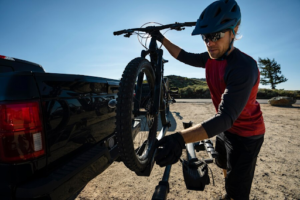Are you ready to conquer new trails but unsure about how to transport your bike and gear? Choosing the right vehicle is crucial for a seamless and enjoyable mountain biking experience. Whether you’re a weekend warrior or a seasoned trailblazer, the type of vehicle you drive can make or break your adventure. This guide will help you understand your needs, compare different vehicle types, and make an informed decision, all while keeping your budget and environmental concerns in mind.
Defining Your Mountain Biking Needs
Before you start looking at vehicles, it’s essential to understand your specific mountain biking requirements. Are you hitting rugged mountain trails or sticking to smoother paths? Do you bike alone or with a group? Answering these questions will help you focus on what you need.
Types of Trails
The type of terrain you usually ride affects the kind of vehicle you’ll need. If you frequent off-road trails, you’ll need a vehicle with robust off-road capabilities. On the other hand, if you stick to urban trails or bike parks, a standard vehicle might suffice.
Frequency of Biking
How often do you go mountain biking? If it’s a regular activity, you’ll need a reliable vehicle with ample space for your gear. If you only bike occasionally, you might get by with a smaller, more economical option.
Group Size and Gear
Do you go solo or with friends? The number of people you bike with and the amount of gear you carry will influence your vehicle choice. More people and more gear mean you need more space.
Comparing Vehicle Types
There are several vehicle types to consider, each with its pros and cons. Let’s break them down:
SUVs
SUVs are a popular choice for mountain bikers. They offer ample cargo space and good off-road capabilities. With foldable rear seats, you can easily load multiple bikes and gear. However, they can be expensive and less fuel-efficient.
Trucks
Trucks are excellent for transporting bikes, especially if you have a lot of gear. The open bed allows you to carry multiple bikes without trouble. However, they may not offer the same comfort level as SUVs, especially for long trips.
Vans
Vans are a versatile option for mountain bikers, offering both space and convenience. Worth considering are Ford Custom vans, renowned for their generous interior capacity and customizable features. These vans can comfortably accommodate several bikes, riders, and gear, making them a great choice for group outings. Additionally, these vans often come equipped with modern amenities that add to your comfort during long journeys, ensuring you arrive at your destination ready to hit the trails.
Trailers
If you already have a vehicle but need more space, a trailer can be a great addition. They allow you to carry several bikes and tons of gear. The downside is the extra hassle of towing and parking a trailer.
Budget Considerations
Balancing cost, fuel efficiency, and maintenance is crucial when choosing a vehicle. Here are some tips:
Initial Cost
Trucks and SUVs tend to be more expensive than vans and trailers. Consider your budget and prioritize what features are most important to you.
Fuel Efficiency
Fuel costs can add up, especially if you go on long trips frequently. SUVs and trucks generally have lower fuel efficiency compared to vans and smaller vehicles.
Maintenance Costs
Maintenance is another factor to consider. Trucks and off-road SUVs may require more frequent upkeep compared to vans or smaller vehicles.
Environmental Impact
In today’s eco-conscious world, the environmental footprint of your vehicle is worth considering. How do various options stack up?
Vehicle Footprint
SUVs and trucks generally have a larger carbon footprint due to their size and fuel consumption. Vans and trailers, while also significant, offer a middle ground.
Sustainable Alternatives
Consider hybrid or electric options if you’re worried about environmental impact. While initially more expensive, they can save you money in the long run and reduce your carbon footprint.
Making Your Decision
Now that you have all the information, it’s time to make a choice:
Evaluate Your Needs
Reflect on the types of trails you ride, how often you go, and your group size. This will help you narrow down your options.
Compare Options
Weigh the pros and cons of SUVs, trucks, vans, and trailers. Consider your budget, environmental concerns, and the advice from experts and fellow bikers.
Final Decision
Choose the vehicle that best fits your needs and budget. Remember, the goal is to enhance your mountain biking experience, not complicate it.

Choosing the right vehicle for your mountain biking adventures can significantly impact your experience. By understanding your needs, comparing different vehicle types, and considering budget and environmental factors, you can make an informed decision that enhances your outdoor excursions.
Ready to hit the trails in style? Start exploring your options today and find the perfect vehicle for your mountain biking needs.



